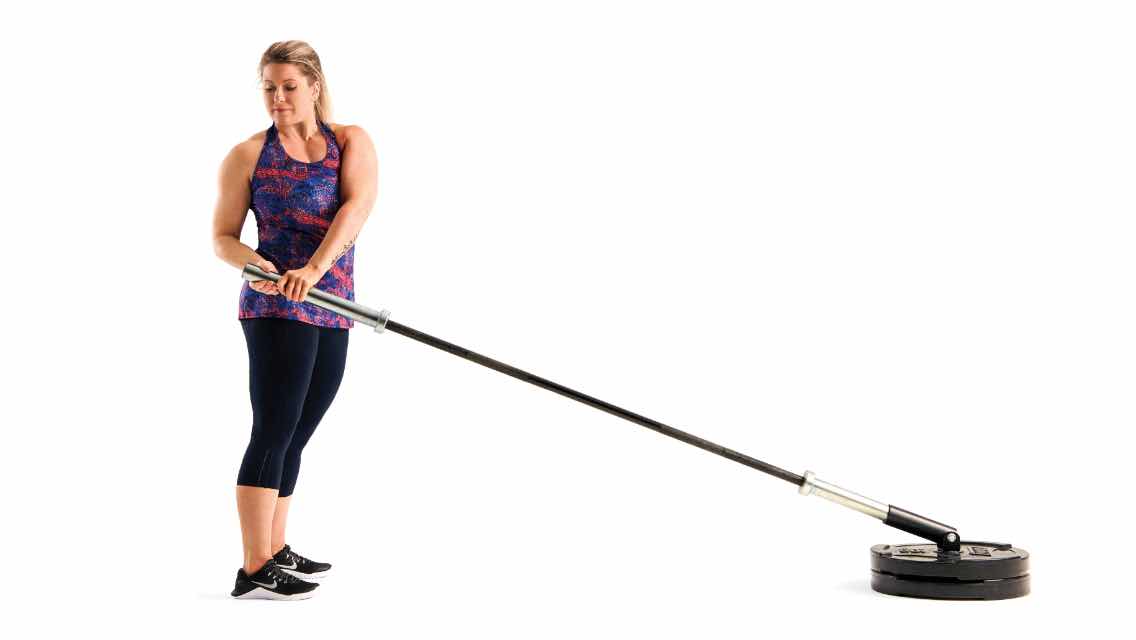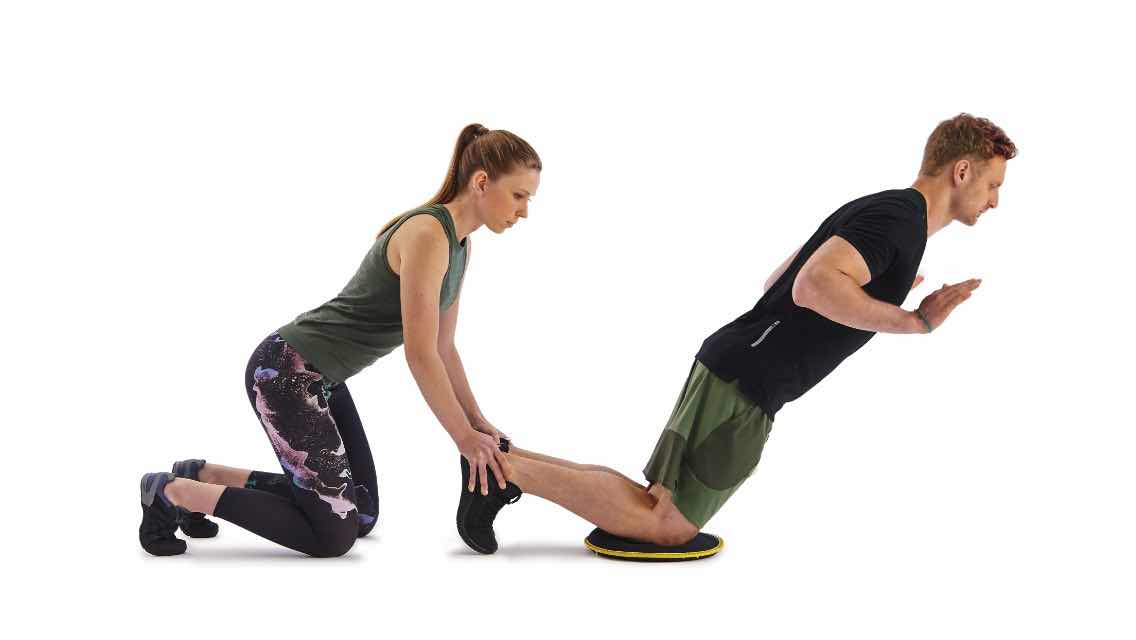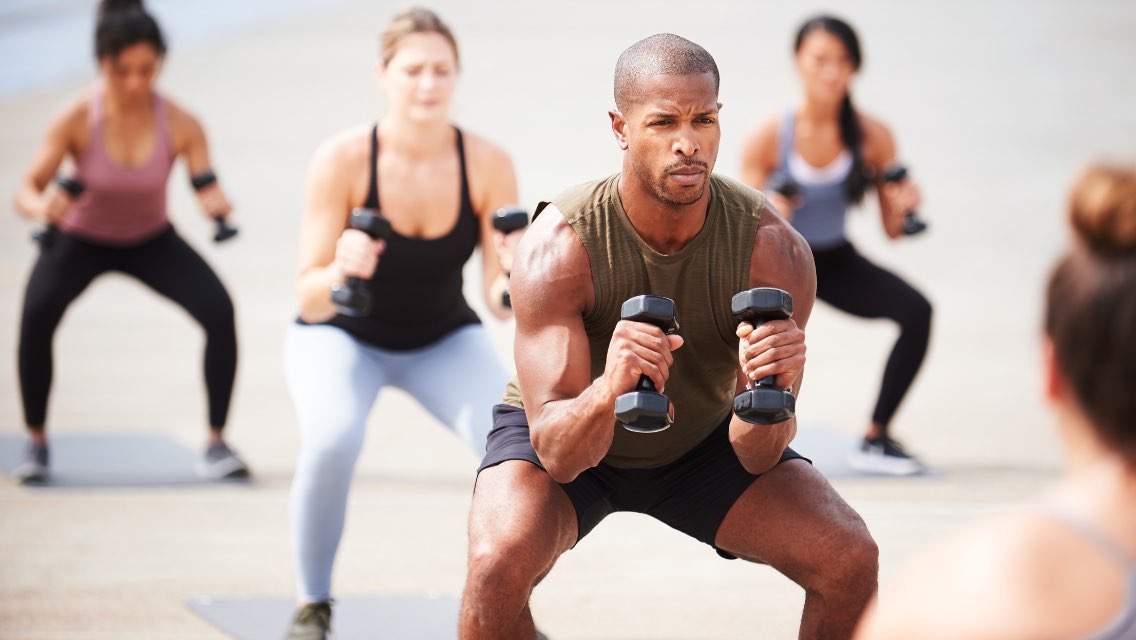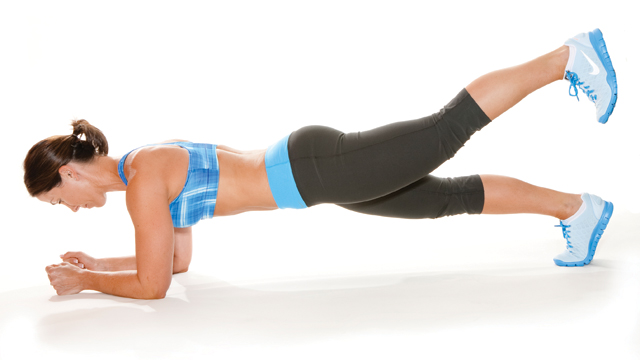Barbells are most often used for squats and deadlifts, but their potential extends beyond these traditional moves. Landmine exercises offer a multidimensional twist.
Landmine training — which involves anchoring one end of a barbell to the floor and holding the other end to perform strength exercises — combines the effects of barbell and free-weight training. “This allows you to create some unique movements that you can’t do otherwise,” notes personal trainer Cliff Edberg, RD/LD, director of strategic growth initiatives at Life Time.
And because the barbell is anchored at one end, you can position yourself to safely accommodate any pain or limitations in your range of motion. “You can move around the bar instead of forcing yourself into a fixed point,” Edberg explains.
Edberg’s full-body circuit workout features several key movements that recruit multiple muscle groups at once. You can also incorporate the individual moves into your existing routine. Do an anchored offset reverse lunge instead of a walking lunge, for instance, or an anchored squat instead of a barbell back squat.
Before you begin, set up the barbell in a landmine anchor, an attachment now found in most health clubs and gyms. You can also use a corner wall to secure the barbell in place if you don’t have the right equipment.
When you’re ready, start with the first circuit and move from one exercise to the next, stopping only as long as it takes to adjust the weight, as needed. (Do this by adding and removing weight plates from the free end of the barbell.) Rest for one minute at the bottom of the circuit before repeating. Once you’ve finished three rounds of the first circuit, rest for two minutes, then move on to the second circuit. Focus on completing every rep with good form.
Circuit 1
A. Offset Reverse Lunge
Unilateral exercises like the reverse lunge best mimic our everyday movements, Edberg says. And since you have to work harder to maintain your balance, unilateral exercises are very effective for training core stabilization.
- Stand facing the anchor point with feet shoulder width apart. Hold the free end of the barbell in your right hand so your elbow is bent and the weight is close to your chest.
- Step your right foot back to lower into a lunge until your right thigh is almost or completely parallel to the floor. Keep your chest high.
- To return to the starting position, step your right foot forward to meet your left. Repeat all reps on one side before switching.
- Perform 10 to 12 reps per side.
B. Half-Kneeling Press
The landmine allows you to press in an arc, as opposed to straight overhead which can be difficult or painful for people with limited shoulder and neck mobility. And by performing the movement in a half-kneeling position, you’ll build core stability and boost glute activation.
- Lower yourself to a single-leg kneeling position, with both legs bent to about 90 degrees. Grip the free end of the barbell in one hand so the end of the barbell is in front of your shoulder on the opposite side of your lead leg.
- Brace your core and press the barbell overhead until your arm is fully extended.
- Lower the barbell back down to the starting position.
- Perform 10 to 12 reps per side.
C. Anti-rotation
This move teaches your core to resist rotation while maintaining a neutral spine. As Edberg explains, building core strength and stability creates a sturdier environment for your spine.
- Stand facing the anchor point with feet hip width apart. Hold the free end of the barbell in front of your body with hands stacked and elbows slightly bent.
- Keeping your hips facing forward, use only your arms to move the barbell to one side of your body. Once you’ve gone as far you’re able without twisting your torso, move the barbell to the other side of your body.
- Perform 10 to 12 reps per side.
Circuit 2
A. Squat
Thanks to the natural arc pattern created by the landmine attachment, the weight only gets lighter as you stand, making this squat variation gentle on the lower back.
- Stand facing the anchor point with feet hip width apart. Hold the free end of the barbell against your chest with hands stacked and elbows bent.
- Push your hips back and bend at the knees to lower into a squat. Squat down until your thighs are almost or completely parallel to the floor. Push through your heels to return to standing.
- Perform 10 to 12 reps.
B. T-Bar Row
According to Edberg, a T-bar rowing variation targets your lats and biceps, while the hip-hinge position recruits your glutes and hamstrings.
- Attach a T-bar or other neutral-grip attachment to the free end of the barbell. (Note: If you don’t have access to one of these attachments, you can simply grip the bar.)
- Facing away from the anchor point, straddle the barbell. Hinge forward at the waist and grip one end of the attachment in each hand.
- Keeping your back flat, row the barbell toward you. Straighten your arms to lower the barbell back down to the starting position.
- Perform 10 to 12 reps.
C. Rotating Lunge
The rotating lunge strengthens your deep core muscles while increasing hip mobility, Edberg says. Plus, the addition of a lunge will work your lower body.
- Kneel beside the barbell on one knee and grip the free end of the bar with the hand nearest the anchor point.
- Use the power of your hips to rotate the barbell to the other side of your body, pivoting on your rear foot so you end in a lunge. Reverse the movement to return to the start.
- Perform 10 to 12 reps per side.
To watch the full video, check out “The Anchored-Strength Workout.”
This originally appeared as “Anchored Strength” in the May 2019 print issue of Experience Life.




This Post Has 0 Comments